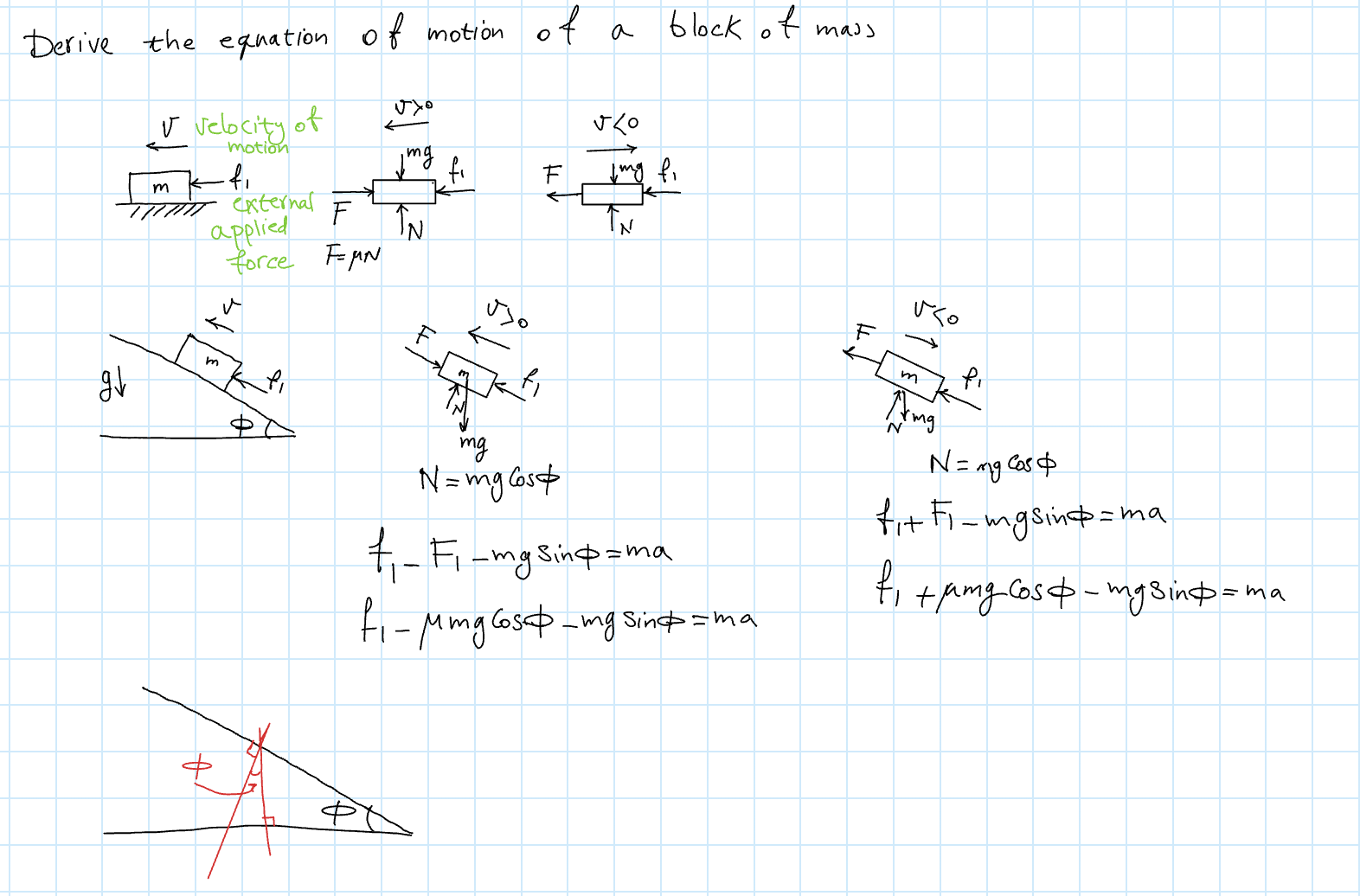Newton’s 2nd law states:
If the mass only moves in the -direction:
If we assume:
- The object is rigid
- Can neglect force distribution
Then we can treat the object as a concentrated mass or point mass; the dimensions can be ignored. A lumped element is a point mass.
Mechanical Energy
Conservation of mechanical energy is given by:
where and . Thus, we can write
If the work done by is independent from the path and only depends on end points, then the force is called a conservative force and can be derived from a function .
Let’s say we have a starting time . Then, we have:
For an arbitrary time , we then have:
Gravity
Gravity is an conservative force:
Constant Force
If we have a constant force such that , we have
Then, the potential energy is
Friction
The work done by friction is path-dependent, so it’s a non-conservative force. We have:
where is the normal force, is the coefficient of friction.
- is the coefficient of static friction – force required to initiate motion
- is the coefficient of dynamic friction – force required to maintain motion between two objects in contact
Generally, , as it takes more force to start the motion of an object than to keep it moving.
